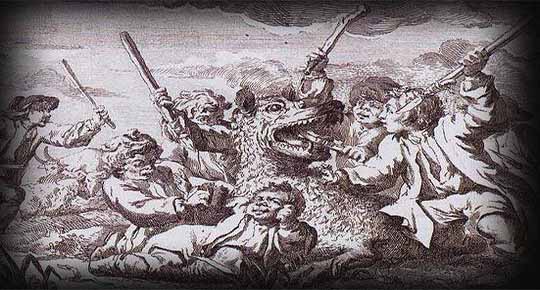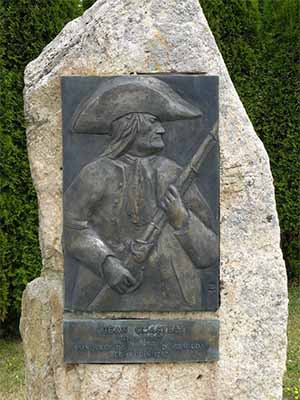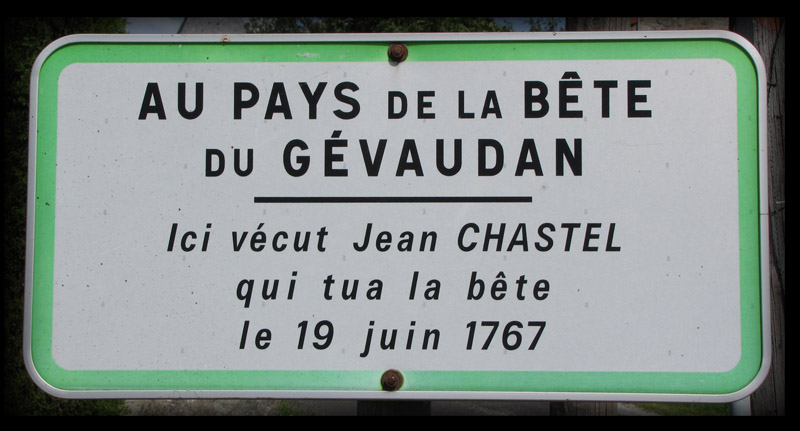Beast of Gévaudan
A French Serial Killer ?

In the 1760s in France, terrible atrocities are committed and attributed to a mystical creature nicknamed the Beast of Gévaudan. In its savagery which lasts nearly three years and which extends to several French regions (Gevaudan, Vivarais, Haute-Loire, Cantal, Aubrac and Lozere), the said beast vilely takes the life of more than a hundred people, for the most part women and young children, and injures dozens more. The affair becomes so serious that the stir seizes people, willing to do anything to stop the carnage. Persons only come out of their homes armed to the teeth and a real hunt for the animal begins. Some gossip suggests wolf attacks, but for others the murders are the work of a foul serial killer.
Hateful crimes

The massacres of the Beast of Gévaudan begin in the spring of the year 1764 when the body of a teenage girl is found murdered. The first descriptions of the killer reported by witnesses mention an animal similar to a big beast. In the months and years following, many children are villainously slaughtered, often disemboweled and maimed. The crimes are absolutely horrible and King Louis XV can only dispatch a battalion of soldiers in front of the growing panic of France inhabitants. Newspapers spreads the affair and the beast which, probably feeling the vise tightening, migrates to Aubrac where it continues its sordid mutiny. Dead bodies are almost always found butchered and sometimes even decapitated. Barbarities of the beast seem to have no limits. Many chases are led in the woods but no one manages to stop it.
About a year later, the bloodshed continues and hunters are just as powerless to capture the beast as King Louis XV soldiers whom, in the face of people's indignation, sends Lieutenant Antoine de Beauterne, a hunter and sharp shooter, in order to kill the beast. But Beauterne only manages to hunt down a huge wolf which Louis XV stuffs and exposes at Paris Museum so as to stop being ridiculed. But all in vain, the Beast of Gévaudan continues to rage ...

And then the hecatomb stops
In the summer of 1767, Jean Chastel, an elderly and solitary keeper living with his two boys in the region of Gévaudan and suspected of being at the origin of the killings, slaughters a wolf during a chase led by the Marquis d 'Apcher. Those attending the event then reported that the famous beast did not seem to have tried to escape while Jean Chastel aimed at it, which tends to confirm that Chastel's suspicions were founded. Crimes attributed to the Beast of Gévaudan cease definitively and Jean Chastel is praised as a hero; people even build stones in his honor.
A wolfman or a beast ?

Afterwards, people have tried to give a rational explanation to the story of the Beast of Gévaudan and have accused a pack of wolves monsters whose last would have been killed by Jean Chastel. But as some skeptics point out, wolves only very rarely behead their victims. To this day, the most probable thesis is that of an infamous serial killer, a wolf-man working in pairs with animals trained to kill. Locals have suspected Jean Chastel to have trained hounds, a kind of big wild wolf dog, to commit abominations. A recent analysis of autopsy reports seems to confirm this as do testimonies of those who witnessed the killing of the beast. Would Chastel and a flock of hounds hide behind this terrible carnage? According to some sources, a witness in particular would have said that the Beast of Gévaudan was a man who was no longer one but would've prefered to hide his name whom according to his words would've paid his monstrous acts dearly.
Beast-o-rama
France seems to be a particularly popular place for beasts of all kinds and besides the Beast of Gévaudan, it is interesting to note that other vicious creatures have also raged in the vicinity: the beast of Cinglais in the seventeenth century, the beast of Trucy in the eighteenth century, the beast of the Gard in the nineteenth century and more recently the beast of the Cézallier at the turn of the 1950s.









































































































































































































































































































































